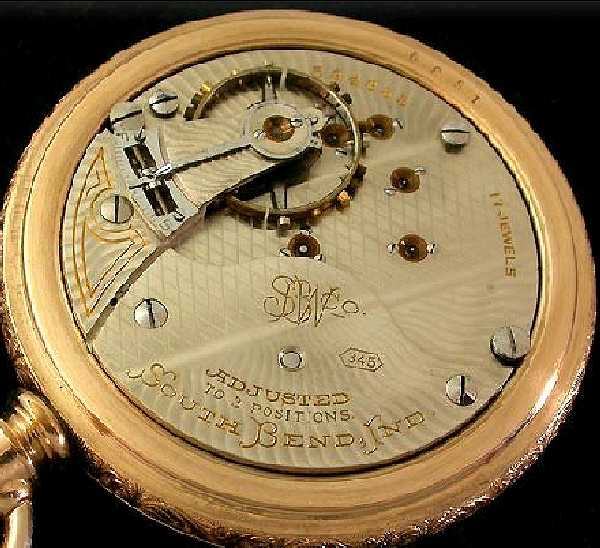

During the 1890's Seth Thomas also manufactured other high grade movements with 15-jewels and 17-jewels, a patent regulator, adjusted to heat and cold, which meet the requirements in place on many railroads during the 1890's 1. The Henry Molineux grade was the highest grade made in both models, manufactured and adjusted to meet railroad requirements. The Model 2 (hunting case) and Model 3 (open face), 3/4 plate movements, were introduced in the late 1880's. By 1886, production had started on four additional grades of quick-train (18,000 beat per hour) watches: a 7J, 11J, 15J and 17J model. The first watch model, offered for sale in 1885, was an 18-size, stem-wind, 11-jewel, 3/4 plate model with a 16,000 beat train. Most of the tooling for the watch factory was built using the production facilities of the Seth Thomas clock factory. In 1883-1884 the Seth Thomas Clock Co., Thomaston, CT, built an addition to its existing factory on the corner of Marine Street and Bridge Street in order to manufacture jeweled pocket watches. Larger railroad stations in principle cities often used larger models with more elaborate cases, such as Seth Thomas Regulator No 18, height 54 inches, Seth Thomas Regulator No 16, height 75 inches with a 12 inch dial, or Seth Thomas Regulator No 19, height 75 inches with a 12 inch dial and a mercury pendulum. Also an 8-day weight driven clock, and because of its accuracy, was widely used as the Standard Clock in the railroad stations across North America. The larger Seth Thomas Regulator No 3 featured a 14 inch dial and 41 to 44 inch tall case. It is an 8-day weight driven clock, and because of its accuracy, graced the walls of railroad stations across North America.

The model was produced, with very few changes, until 1950 and thus is probably the longest produced single model in clock manufacturing history. 2 had a 12 inch dial and a 36 inch tall case (which varied slightly during the years). 2 regulator was introduced in the early 1860s. It is an 8-day weight driven clock, and because of its accuracy, was used in railroad stations in North America. 1 had a 12 inch dial and a 36 to 44 inch tall case (which varied slightly during the years). They also added a line of tall-case clocks in the 1880’s.

Hotchkiss that manufactured tower and street clocks, adding tower and street clocks to their line. In 1872 The Seth Thomas Clock Company purchased the business of Andrew S. Huntington and Harvey Platts of Ithaca, New York, and added a perpetual calendar clock to their line. About 1862, the firm purchased the patent rights of Wait T. The patterns and machinery for these had been purchased in 1859 from the creditors of bankrupt clockmaker Silas B. Regulator clocks were introduced in 1860. Aaron became president and began to add new clocks to the company's line. Thomas died in 1859.Īfter the Seth Thomas's death in January 1859, his three sons, Seth Thomas, Jr., Aaron, and Edward continue the business. Thomas incorporated the Seth Thomas Clock Company, in Plymouth Hollow (later to become Thomaston). In 1842, brass movements were introduced, wood movements were phased out in 1845. Seth Thomas sold his interest in the partnership to Silas Hoadley in December 1813 bought out Herman Clark’s clockmaking business in Plymouth Hollow, Connecticut, making wooden movement tall clocks, and about 1817 began making a wooden movement shelf clock. Seth Thomas worked together with Silas Hoadley, the two bought out Terry’s interest in 1810. Terry had received an order to produce 4,000 clocks in three years, a challenge that led to inventing methods of mass production necessary to complete the order on time. Seth Thomas began his clock making apprenticeship working with one of the foremost early American clockmakers, Eli Terry, in 1807 in Waterbury, Connecticut.


 0 kommentar(er)
0 kommentar(er)
